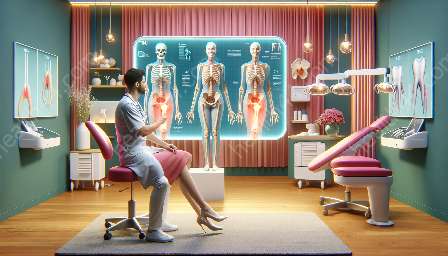The temporomandibular joint (TMJ) is a complex joint that connects your jaw to your skull. It plays a crucial role in eating, speaking, and facial expressions. Understanding the anatomy of the temporomandibular joint and the common causes of temporomandibular joint disorders (TMJ) can provide insights into the potential underlying issues and help in finding the right treatment. Let's delve into the anatomy of the temporomandibular joint and explore the common causes of TMJ disorders.
Anatomy of the Temporomandibular Joint
The temporomandibular joint is comprised of the mandible (lower jaw) and the temporal bone of the skull. The joint itself is enclosed by a complex structure of muscles, ligaments, and cartilage that enables the jaw’s smooth movement. The condyle of the mandible articulates with the articular eminence in the temporal bone, allowing the jaw to move in various directions such as opening, closing, and side-to-side movements. The joint is further cushioned by a disc, known as the articular disc, which helps in reducing friction during movement.
Muscles that are attached to the temporomandibular joint facilitate movements like chewing, talking, and yawning. The joint's intricate design and function make it susceptible to various disorders when its components are not functioning as they should be, leading to discomfort and pain.
Common Causes of Temporomandibular Joint Disorders (TMJ)
1. Trauma or Injury
One of the leading causes of TMJ disorders is trauma or injury to the jaw joint. This can occur due to a direct blow to the jaw, a car accident, or a fall. The impact can disrupt the alignment of the joint, damage the surrounding tissues, or cause the disc to dislocate, leading to inflammation and pain.
2. Bruxism (Teeth Grinding)
Bruxism, or teeth grinding, can exert excessive pressure on the temporomandibular joint, leading to wear and tear of the joint's structures. Long-term bruxism can result in damage to the cartilage, muscles, and ligaments surrounding the joint, causing TMJ-related pain and stiffness.
3. Arthritis
Arthritic conditions, such as rheumatoid arthritis or osteoarthritis, can affect the temporomandibular joint, leading to inflammation, stiffness, and pain. The degenerative changes in the joint can impact its function and cause discomfort during jaw movement.
4. Malocclusion
Misalignment of the teeth, also known as malocclusion, can contribute to TMJ disorders. When the upper and lower teeth do not fit together properly, it can cause strain on the jaw joint, leading to pain, clicking sounds, and limited jaw movement.
5. Stress and Anxiety
Prolonged stress and anxiety can lead to muscle tension in the jaw, neck, and face, which can contribute to TMJ disorders. Clenching the jaw or tensing the facial muscles due to stress can put undue strain on the temporomandibular joint, leading to discomfort and pain.
6. Joint Overuse
Excessive or repetitive movements of the jaw, such as chewing gum or biting hard objects, can strain the temporomandibular joint, leading to overuse-related TMJ disorders. These movements can cause fatigue in the muscles and increased pressure on the joint, leading to pain and dysfunction.
Understanding the common causes of temporomandibular joint disorders is essential in addressing the underlying issues and pursuing appropriate treatment. By recognizing the intricate anatomy of the temporomandibular joint and the factors that contribute to TMJ disorders, individuals can take proactive steps to maintain jaw health and seek professional guidance when needed.
Conclusion
By comprehensively examining the anatomy of the temporomandibular joint and understanding the common causes of temporomandibular joint disorders, individuals can gain valuable insights into the complexities of TMJ-related issues. Taking proactive measures, such as practicing stress-relieving techniques, seeking dental evaluation for malocclusion, and addressing teeth grinding, can significantly contribute to maintaining optimal jaw health and reducing the risk of TMJ disorders.


